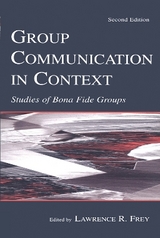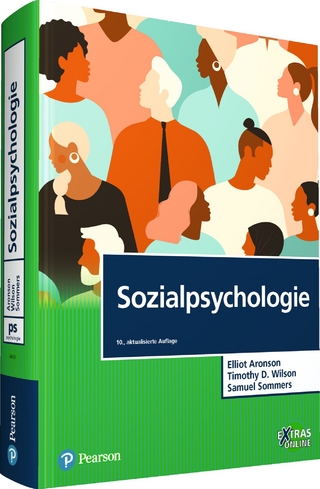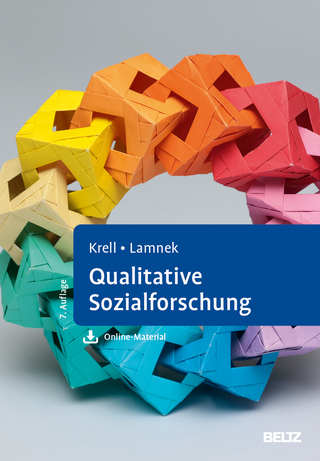
Group Communication in Context
Lawrence Erlbaum Associates Inc (Verlag)
978-0-8058-1315-9 (ISBN)
- Titel erscheint in neuer Auflage
- Artikel merken
Given the importance of groups to the social, political, economic, educational, and moral fibre of our society, and the centrality of communication to group life, it is surprising how little we know about the way people communicate in groups. While there are many theories and principles about group interaction, actual research has lagged behind. Equally problematic is that the vast majority of the research is based on student, zero-history groups meeting in a laboratory setting to solve artificial tasks assigned by researchers. The body of knowledge generated from much of this research is questionable, primarily because the significant contextual factors that impinge on groups in the real world do not operate in the lab and because students--unlike their real-world counterparts-- have little investment in these groups. Scholars have thus called for researchers to move away from the laboratory and study real-life groups. This edited text responds to this need by showcasing original communication studies conducted on natural groups. Five sections examine important processes that characterize natural groups:
*how groups create and sustain their identity,
*the effects of the context on group communication,
*group developmental processes,
*destructive group communication patterns, and
*decision-making group interaction.
Within these sections, the researchers examine a wide range of real-life groups, including business, political, health care, and children's groups, as well as groups on the fringes of society--gangs and feminist witches. Taken as a whole, the chapters demonstrate the diverse methodological approaches that inform the study of natural groups, and many also demonstrate how various methods can be employed in a triangulated, multi-methodological study of a natural group. By extending group communication research to natural settings, this book demonstrates how theories and principles operate in real-life groups, poses new and fruitful questions about communication processes that are so vital to the everyday life of groups, and offers alternative ways of shedding light on these questions.
Contents: L.R. Frey, Introduction: The Call of the Field: Studying Communication in Natural Groups. Part I:Creating and Sustaining Group Identity. M.B. Adelman, L.R. Frey, The Pilgrim Must Embark: Creating and Sustaining Community in a Residential Facility for People With AIDS. D. Conquergood, Homeboys and Hoods: Gang Communication and Cultural Space. C.L. Lesch, Observing Theory in Practice: Sustaining Consciousness in a Coven. Part II:Between Text and Context: Contextualizing Group Communication. J.K. Barge, J. Keyton, Contextualizing Power and Social Influence in Groups. C.R. Berteotti, D.R. Seibold, Coordination and Role-Definition Problems in Health-Care Teams: A Hospice Case Study. Part III:Communication and Group Development. B.L. Brock, S. Howell, Leadership in the Evolution of a Community-Based Political Action Group. S.A. Wheelan, R.L. McKeage, A.F. Verdi, M. Abraham, C. Krasick, F. Johnston, Communication and Developmental Patterns in a System of Interacting Groups. Part IV:Destructive Communication Patterns in Groups. M.A. Ball, Vacillating About Vietnam: Secrecy, Duplicity, and Confusion in the Communication of President Kennedy and His Advisors. R.J.W. Cline, Groupthink and the Watergate Cover-Up: The Illusion of Unanimity. Part V:Decision-Making Group Interaction. T.J. Socha, D.M. Socha, Children's Task-Group Communication: Did We Learn It All in Kindergarten? D. Scheerhorn, P. Geist, J.C.B. Teboul, Beyond Decision Making in Decision-Making Groups: Implications for the Study of Group Communication. D.E. Brashers, M. Adkins, R.A. Meyers, Argumentation and Computer-Mediated Group Decision Making. Part VI:Epilogues: Putting the Texts in Context. C. Stohl, L.L. Putnam, Group Communication in Context: Implications for the Study of Bona Fide Groups. L.R. Frey, Call and Response: The Challenge of Conducting Research on Communication in Natural Groups. D.S. Gouran, On the Value of Case Studies of Decision-Making and Problem-Solving Groups.
| Reihe/Serie | Routledge Communication Series |
|---|---|
| Verlagsort | Mahwah |
| Sprache | englisch |
| Maße | 152 x 229 mm |
| Themenwelt | Geisteswissenschaften ► Psychologie ► Sozialpsychologie |
| Sozialwissenschaften ► Kommunikation / Medien ► Kommunikationswissenschaft | |
| Sozialwissenschaften ► Soziologie ► Makrosoziologie | |
| ISBN-10 | 0-8058-1315-2 / 0805813152 |
| ISBN-13 | 978-0-8058-1315-9 / 9780805813159 |
| Zustand | Neuware |
| Haben Sie eine Frage zum Produkt? |
aus dem Bereich



